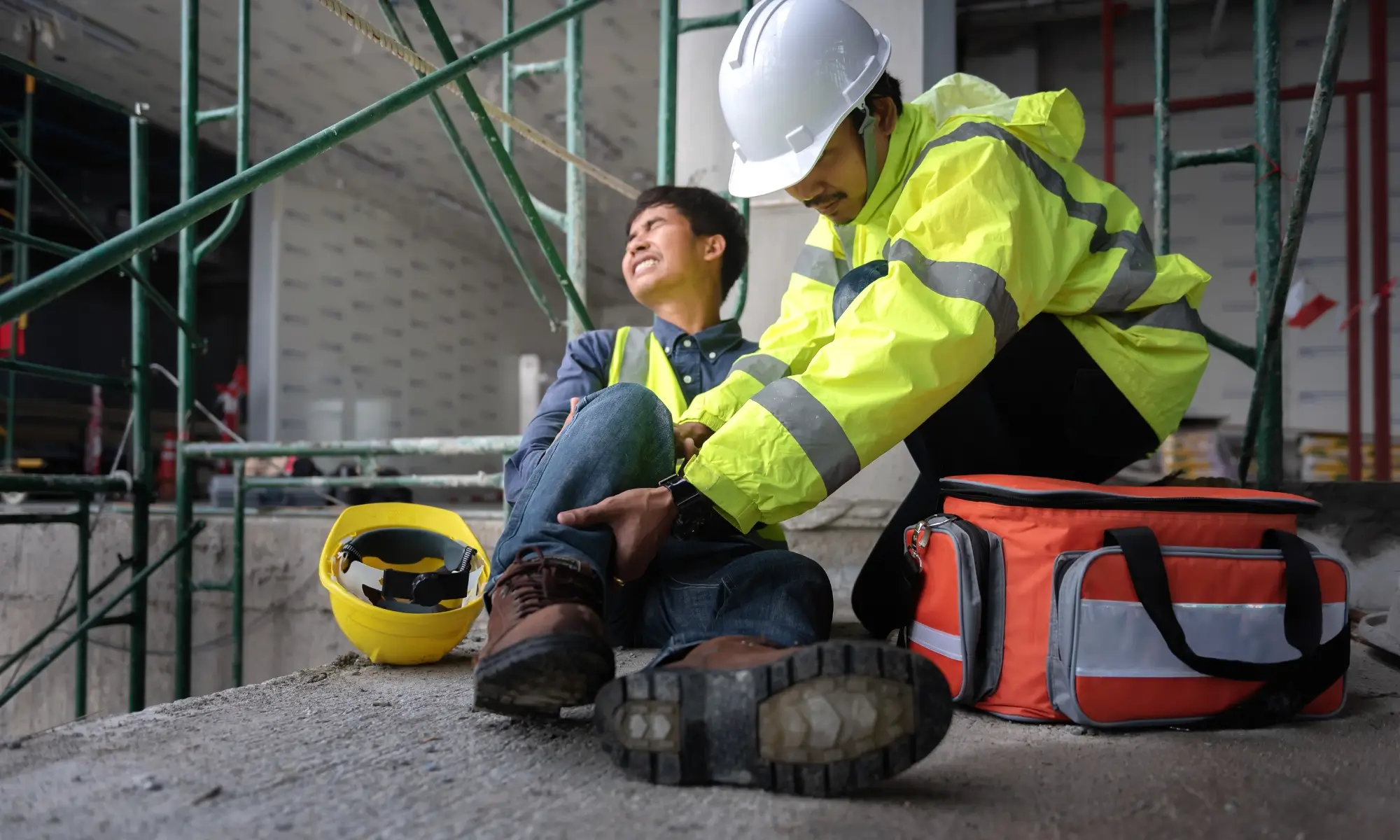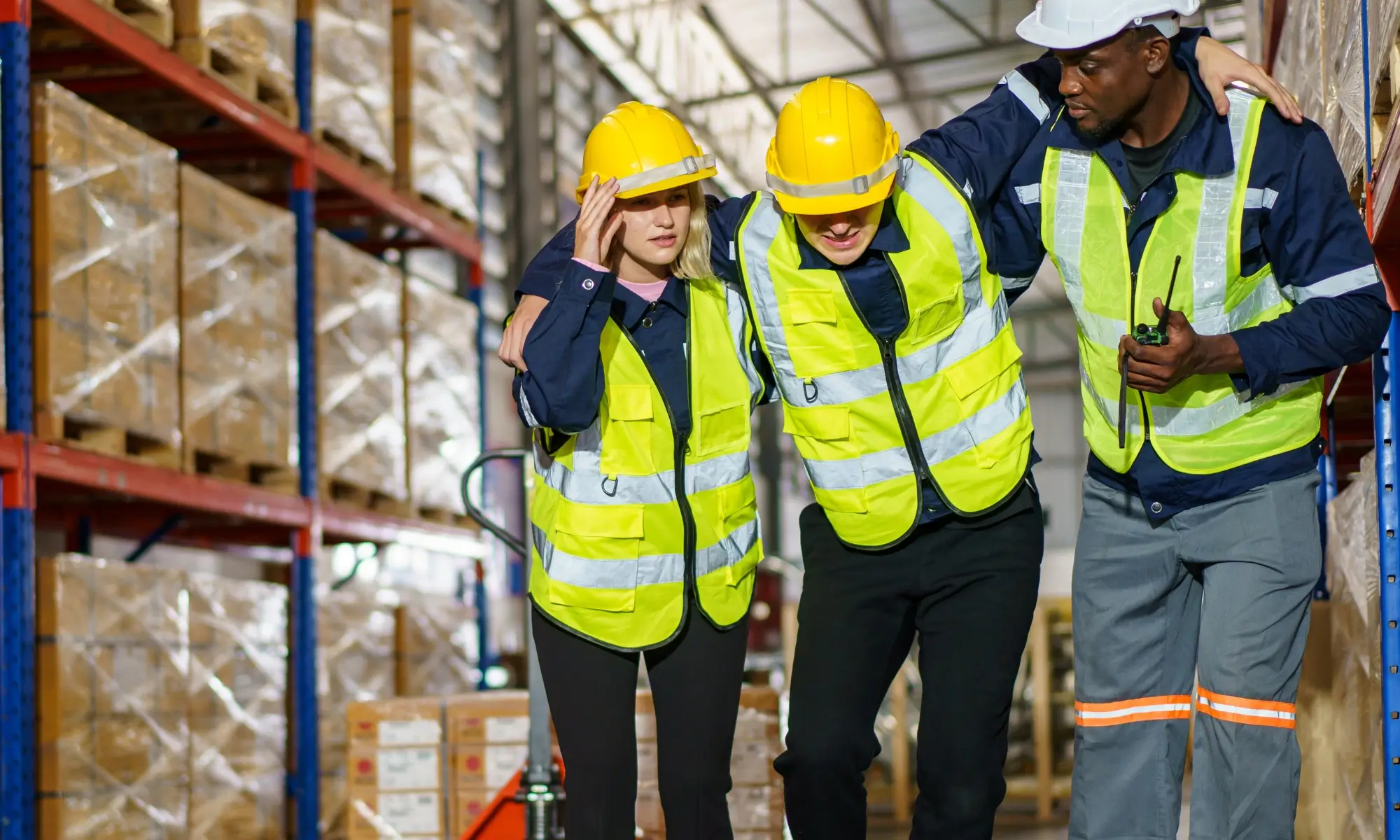Safety should always be a top priority in any work environment, regardless of the industry. Accidents in the workplace can lead to physical injuries, emotional trauma, decreased productivity, and increased costs for both employers and employees.
As the saying goes, “An ounce of prevention is worth a pound of cure.” With that in mind, this blog post aims to provide 12 practical tips on preventing workplace accidents, ensuring that you and your colleagues can work in a safer, more efficient, and more productive environment. So, let’s dive in and explore these essential accident prevention strategies, empowering you to take control of your workplace safety and make a positive difference for everyone involved.

What Is Accident Prevention?
Accident prevention is the systematic process, methods, and practices to reduce the risk of accidents, injuries, or property damage in various environments, such as workplaces, homes, roads, or recreational areas. The goal is to create and maintain a safe environment, minimize hazards, and ultimately protect people and property from harm.
Accident prevention involves identifying potential hazards, assessing the associated risks, and implementing appropriate measures to control or eliminate these risks. This process typically includes the following:
- Education and training: Ensuring that individuals are aware of potential hazards and are equipped with the necessary knowledge and skills to work safely.
- Engineering controls: Designing and maintaining facilities, equipment, and machinery to minimize the risk of accidents.
- Administrative controls: Implementing policies, procedures, and guidelines to promote safe practices and behaviours.
- Personal protective equipment (PPE): Providing appropriate protective gear for individuals to reduce the risk of injury when hazards cannot be entirely eliminated.
- Emergency preparedness and response: Establishing procedures for dealing with accidents or emergencies to minimize harm and ensure a prompt and effective response.
Accident prevention is crucial in promoting a culture of safety, reducing costs associated with accidents, and fostering a healthy, productive environment for individuals and organizations.

Why Is Accident Prevention Important?
Accident prevention is important for several reasons:
- Protects human life and health: Preventing accidents reduces the risk of injuries, illnesses, and fatalities, thereby safeguarding the well-being of individuals involved in various activities, such as work, sports, and daily life.
- Enhances productivity: By reducing the number and severity of accidents, organizations can maintain a healthy and efficient workforce. This increases productivity, as employees can continue working without interruption or losing valuable skills.
- Reduces costs: Accidents can result in significant financial losses due to medical expenses, property damage, compensation claims, and legal fees. Accident prevention helps minimize these costs and can even lower insurance premiums.
- Promotes a positive reputation: A strong commitment to accident prevention demonstrates an organization’s dedication to the safety and welfare of its employees, customers, and the general public. This can enhance a company’s image, increasing customer trust and loyalty.
- Improves morale: A safe working environment, free from accidents, contributes to higher employee morale and job satisfaction. Workers are more likely to be motivated and engaged when they feel that their safety is a priority.
- Compliance with regulations: Adhering to safety standards and regulations is crucial to avoid fines, penalties, and legal consequences. Accident prevention efforts help organizations remain compliant with laws and industry standards.
- Environmental protection: Some accidents, such as oil spills, chemical leaks, or fires, can significantly harm the environment. Preventing these accidents helps protect ecosystems and maintain environmental health.
Accident prevention is essential for safeguarding human life, promoting health, enhancing productivity, reducing costs, and contributing to a positive reputation, employee morale, legal compliance, and environmental protection.

Tips For Accident Prevention In The Workplace
Accidents in the workplace can result in injuries, disabilities, and even fatalities and cause financial and reputational damage to businesses. Therefore, it’s essential to take proactive steps to prevent accidents in the workplace. Here are some tips to help prevent accidents in the workplace:
1. Train Employees
Training employees is an essential step in preventing workplace accidents. Ensuring that all employees receive proper training on using equipment and machinery and handling hazardous materials is important.
This training should cover topics such as the correct operation of machinery, the safe use of tools and equipment, the proper handling and storage of hazardous materials, and emergency procedures in case of accidents.
Training should also be provided to new employees and periodically reviewed and updated for existing employees. Proper training can help reduce the risk of accidents and ensure employees have the knowledge and skills to work safely.
2. Provide Proper Equipment
Providing proper equipment to employees is crucial in preventing workplace accidents. This includes providing appropriate personal protective equipment (PPE) for each employee’s job duties. PPE can include safety glasses, hard hats, gloves, respiratory protection, and hearing protection.
Ensuring the PPE is suitable for the job and properly fitted to the employee is important. Additionally, PPE should be regularly inspected and maintained to ensure it is in good condition and can provide adequate protection.
Other equipment, such as machinery and tools, should be regularly inspected and maintained to ensure they function properly and safely. This includes conducting regular maintenance checks and repairs and ensuring employees are trained to use the equipment properly. Proper equipment can help reduce the risk of accidents and injuries in the workplace and ensure that employees can work safely and effectively.

3. Keep Work Areas Clean
Keeping work areas clean and organized is an important aspect of workplace accident prevention. A cluttered and disorganized workspace can increase the risk of accidents, such as slips, trips, and falls.
Employees should be encouraged to clean up, dispose of waste properly, and store equipment and materials in designated areas to maintain a clean and organized workspace. Regular cleaning and maintenance should also be scheduled to ensure that work areas are kept clean and free from hazards.
Employers can also implement a workplace organization program, such as 5S, to promote a culture of organization and cleanliness. This can involve sorting, simplifying, sweeping, standardizing, and sustaining work areas to ensure they are clean, organized, and safe.
4. Use Warning Signs
Using warning signs in the workplace is an effective way to alert employees and visitors of potential hazards and reduce the risk of accidents. Warning signs can be used in areas with a risk of accidents, such as near machinery, where there is a risk of slipping or tripping, or where there are hazardous materials.
The use of warning signs should be standardized throughout the workplace to ensure consistency and clarity. Signs should be placed in visible locations, and their meaning should be easily understood by employees and visitors.
Some examples of warning signs that can be used in the workplace include “Caution: Wet Floor,” “Do Not Enter,” “Hard Hat Area,” “Danger: High Voltage,” and “No Smoking.”
5. Follow Safety Guidelines
Following safety guidelines is essential in preventing workplace accidents. Employers should establish and communicate clear safety guidelines and policies to employees and ensure they are always followed.
Safety guidelines should cover properly using equipment and machinery, handling and storing hazardous materials, emergency procedures, and safe work practices. Employees should be provided with safety guidelines and policies training and encouraged to ask questions if they are unsure about anything.
Employers should also regularly review and update the safety guidelines and policies to ensure they are up-to-date and effective in preventing accidents.

6. Conduct Regular Safety Audits
Regular safety audits are an important aspect of workplace accident prevention. They involve reviewing the workplace for potential hazards and identifying areas for improvement.
During a safety audit, employers should review safety policies and procedures, inspect equipment and machinery, check the condition of the workplace, and observe employees to ensure they are following safety guidelines. The safety audit results should be documented, and any identified hazards should be addressed immediately. This can involve implementing new safety policies or procedures, repairing or replacing equipment, or providing additional training to employees.
By conducting regular safety audits, employers can proactively identify potential hazards and take steps to prevent accidents before they occur. This can help to create a safer and healthier workplace for employees.
7. Encourage Reporting Of Hazards
Encouraging employees to report hazards is an important aspect of accident prevention in the workplace. Employees may be able to identify hazards that employers or safety managers may not be aware of, and promptly reporting these hazards can prevent accidents.
Employers should establish clear procedures for employees to report hazards, including identifying who to report to, how to report, and the expected response time. Employees should be trained on these procedures and encouraged to report any potential hazards they identify in the workplace. Employers should also ensure that employees feel comfortable reporting hazards and that there are no repercussions. This can help create a workplace safety culture and encourage employees to take an active role in preventing accidents.
By encouraging employees to report hazards, employers can identify potential hazards early and take steps to prevent accidents before they occur. This can help to create a safer and healthier workplace for everyone.
8. Respond Quickly To Hazards
Responding quickly to hazards is crucial in preventing workplace accidents. If a hazard is identified, it should be addressed promptly to reduce the risk of accidents or injuries. Employers should establish clear procedures for responding to hazards, including identifying who is responsible for addressing the hazard, what steps must be taken, and the expected response time.
Once a hazard has been identified, employers should take immediate action to mitigate the risk of accidents. This may involve repairing or replacing equipment, providing additional employee training, or modifying work processes to reduce the risk of accidents. Employers should also follow up with employees to ensure that the hazard has been addressed effectively and that there are no additional safety concerns.

9. Provide Adequate Lighting
Providing adequate lighting in the workplace is important in preventing accidents. Poor lighting can increase the risk of accidents such as slips, trips, and falls, making it difficult to see potential hazards.
Employers should ensure that work areas are well-lit, especially in areas with a risk of accidents. This can involve installing additional lighting or ensuring existing lighting is bright enough to provide adequate visibility. Employers should also ensure that all lighting fixtures are properly maintained and that any burned-out bulbs are replaced promptly.
10. Encourage Breaks
Encouraging employees to take regular breaks is important in preventing workplace accidents. Fatigue can increase the risk of accidents, as tired employees may be less alert and more prone to making mistakes.
Employers should establish policies encouraging employees to take regular breaks, such as scheduled rest breaks or the ability to take breaks when needed. Employers should also encourage employees to use their breaks to rest and recharge, such as by taking a walk or engaging in other relaxing activities.
11. Have A First Aid Kit
Having a first aid kit on site is an important aspect of accident prevention in the workplace. A well-stocked first aid kit can help employees respond quickly to injuries or accidents and potentially prevent minor injuries from becoming more serious.
Employers should ensure that a fully stocked first aid kit is on site and that employees know its location. The first aid kit should be regularly inspected and restocked as needed. In addition to a first aid kit, employers should also ensure that trained first aid responders are on site who can provide basic first aid and respond to emergency situations.
Employers can help ensure that employees receive prompt and appropriate care in the event of an accident or injury by having a first aid kit on site and trained first aid responders. This can help prevent more serious or long-term health problems.

12. Conduct Regular Safety Training
Regular safety training is an important aspect of accident prevention in the workplace. Safety training can help employees understand potential hazards and how to prevent accidents and provide them with the knowledge and skills they need to work safely.
Employers should establish a regular workplace safety training program covering various topics, including the proper use of equipment and machinery, safe work practices, handling and storing hazardous materials, and emergency procedures.
Training should be provided to new employees and regularly reviewed and updated for existing employees. Employers should also ensure that employees are aware of any safety policy or procedure changes and receive the appropriate training in response to these changes.
By providing regular safety training, employers can help employees to stay informed about potential hazards and learn new skills and best practices for working safely. This can help to reduce the risk of accidents and injuries and create a safer and healthier workplace for everyone.
Conclusion
Workplace safety should always be a top priority for both employers and employees. By implementing these 12 tips for accident prevention in the workplace, organizations can create a safer and more productive working environment for everyone. Every step toward accident prevention can make a significant difference, from providing appropriate training to ensuring that safety equipment is properly used.
By staying alert, following best practices, and continuously evaluating and improving safety measures, workplaces can reduce accidents, protect employees, and avoid costly legal and financial consequences. Ultimately, investing in workplace safety is a win-win for everyone involved.

